Widely known as Everest Base Camp Trek with in 14 days is one the most recommended and popular trekking routes of Nepal. In EBC trek14 days we experience the mountainous region of Nepal which are rich in biodiversities, culture, breathtaking scenery and more.
The trek passes through amazing trails of Khumbu region showcasing the magnificent views of Himalayan ranges, Sherpa villages, monasteries, farmlands, local cheese factory and many more. Viewpoint like Kalapathar (5643 m, highest point of EBC trek) offers closeup and 360-degree view of Mt. Everest (8848 m), Mt. Makalu (8481 m), Mt.Lhotse (8516 m) and other high peaks.
Local people of Khumbu region called themselves Sherpas are famous worldwide for their mountaineering. One of them is Tenzing Norgay Sherpa who along with Sir Edmund Hillary followed this route to world highest point on earth. Namche Bazaar is famous Sherpa town and also gateway for many EBC trek.
One of the World Heritage sites of Nepal lies here i.e. Sagarmatha National Park, home to many rare flora and fauna. Trekkers pass through this national park and if lucky enough, they might encounter rare animals like snow leopard, red panda and more. During spring season, the national flower of Nepal “ Rhododendron or Lali Guras” cover the entire forest with bright colors. So, trekking during spring makes the journey heavenly.
Adventure lovers from across the world visit Nepal to experience the adventure and challenges of Everest Base Camp Trek. Hiking starts from 1400 m altitude ( Kathmandu) to 5380 m altitudes ( Everest Base Camp) where max height reach upto 5643 m (kalapathar). Trekking days depends on the individual or group choice; EBC trek 14 Days and EBC Trek 15 Days are most popular.
The journey starts from a 40 min short flight from Kathmandu to Lukla, then trek to Phakding (3-4 hours). After landing, trekkers meet their guides and as the hike starts trekkers views first glimpse of Mt. Everest along with other summits. Routes proceed through wonderful places of Khumbu region such as Namche, Tengboche, Dingboche, Gorakshep, Kalapathar and more. “Tengboche Gumba”, the biggest monastery of this region lies here which is home to many Buddhist monks.
Colorful Buddhist prayers flags, chanting, mani stone along the way makes the journey very peaceful and spiritual. The chanting from the monastery provides inner peace and gives the feeling of “Moksha”.
As for the EBC Odyssey 14 days Itinerary, the agency design the overall journey focusing on travelers ability, safety, and satisfaction. Trekker follows various routes way to reach Everest Base Camp which are Phaplu Everest Base Camp, Everest Helicopter Tourand more.
Best Season for Everest base camp trek 14 days
Everest Base Camp is situated at a high altitude (17,600 ft / 5380 m), and the overland path to get there is also big. This means that the Everest area is never really ‘warm,’ but there are still significant differences in temperature and snowfall throughout the year.
Spring and Autumn Seasons: From mid-February to May till the mid-September to mid-December are the most popular months for trekking in the Everest region because the weather is at its best during these months. Spring and autumn tend to offer mild temperatures, sunny skies, little-to-no chances of rain, and a lower risk of problematic snowfall. These are also the busiest months at the trails, but if you’re looking for the best weather, that’s a trade-off you may be willing to make.
Winter Season The winter (December, January, and February) isn't the ‘bad’ time to trek EBC, but it is obviously the off-season. Temperatures will go down to extremely low levels, so you’d need to be well prepared for the freezing conditions. However, the skies are usually very clear in the winter, allowing for panoramic views of the mountains. And you won’t have to compete for accommodation with other hikers through the route.
Monsoon Season Monsoon season (June to early September). It is not the ideal time to EBC Trek 14 days. Besides the rainy weather, which can cause landslides and muddy conditions on trails, rain clouds can obscure scenery. But, temperatures are warmer at this time of year, and it rarely rains every day. Trekking in the monsoon can be perfect if you’re well prepared for the rain and don’t mind getting a little wet along the way because the higher you go in altitude, the less rain will be falling. If trekking does not make the list, but a helicopter tour to EBC is, these are both best when the weather is clear and easy to journey.
Everest Base Camp Trek Difficulty
There are three ways to summarize the difficulty in the Everest Base Camp. it effects during your trip. if you are ready for it, everest base camp trek 14 days is easy for you.
Length
At around 130km (round trip) the trek seems to be quite long, but if you consider that on a typical guided trek, you will only be walking for 12 out of the 14 days, you’ll see that you will be covering at around 15km per day. If you keep in mind that the average walking pace is about 5-6 Hours per day on averages.
That being said, the 15km per day will not be on a paved path that is flat. Rather you will be trekking at the quite rocky and sometimes snowy terrain (depending on the season and altitude) that is sure to slow down your pace. When you combine the terrain with the fact that you are generally hiking upwards, thus gaining altitude, you can see how the trek becomes a bit tougher. Luckily, most tour operators will use porters or mules to carry your bags so you just have to focus on getting yourself up at the trail.
Altitude
Altitude is by far the most challenging aspect of the trek and is what makes it more difficult than your average trek at the same length. Acute Mountain Sickness and other altitude related illnesses are serious risks in the sort of altitudes encountered on the trek. The trek starts after the gut-wrenching flight unto Lukla, which stands at just below 3,000m, and then makes its way up to Everest Base Camp at around 5,400m. At the highest point, Kala Pathar, you will be at just over 5,500m – a height which allows to you experience breathtaking views of the whole region.
Most guided tours will have 2 days to allow for acclimatization. These days allow your body to get used to the higher than normal altitude but also gives an opportunity to explore some of the surrounding areas while not trekking. As a result of the acclimatization days and the slow approach to increases in altitude, the outward leg of the trek should take 9 days while the inward leg should take almost 3 days.
Training/Fitness
While you don’t need to get a personal trainer or leave your day job to get fit for the trek, some time spent at the gym and some longer hikes will definitely help prepare you for the hilly trek up to Everest Base Camp. We also recommend doing the few 4-6 hour treks at home so that your body gets used to that sort of duration of workout.
Begin around 6-8 weeks before you leave and build up at the time and distance slowly so that by the end of it your body is comfortable with trekking for a solid 6 hours. Spend some time in the gym focusing on strength training for your legs. While you may not be carrying your bags around (unless you are trekking unsupported), you still have to carry yourself! Squats are a great exercise and will be utilizing your quads a lot on the trek. Finally, some aerobic exercise such as jogging, sprinting and swimming will also help your endurance and increase the ability of your body to circulate oxygen, which becomes harder in higher altitudes of the Everest region.
Everest base camp trek 14 days Accommodation
There are several ways of accommodating food and lodges. In the following lines, we will be going through the several types of accommodation which can be done on Everest Base Camp.
Generally, you will also find Tea Houses for basic accommodation to the highly luxurious hotel. You can also choose the service as per your budget. Usually, people called it lodges rather than hotels in these hilly areas. Lodge will offer you some excellent service and provide you with healthy & hygienic food. They will provide an electric blanket, WiFi, etc. which will be at an additional charge.
Speaking of toiletry, there will be a common toilet after you reached Namche Bazaar. The toilet is designed in Western styles and patterns. You need not go outside the hotel to take a break.
The rooms found in these places can come in many forms. Like the rooms could be shared or you want one room that might cost a bit. The rooms are clean and tidy. Through the window of your room, you can see the panoramic view of the mountains.
There are also several facilities related to the place. Like there is water that runs smoothly 24 hours a day. Hot Baths can be made if you have extra cash with you. In your personal room, you charge your mobile or your camera. If it is outside the room you might a little to charge your stuff.









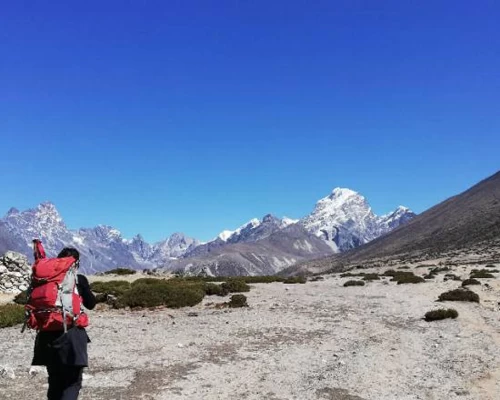
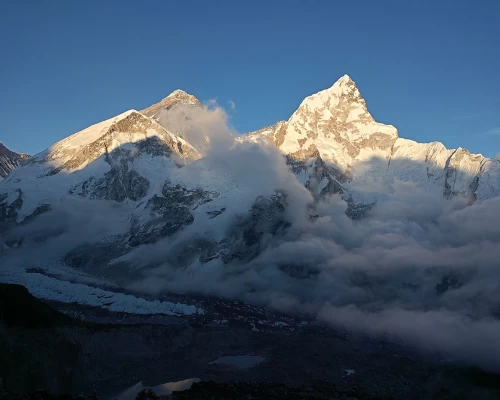

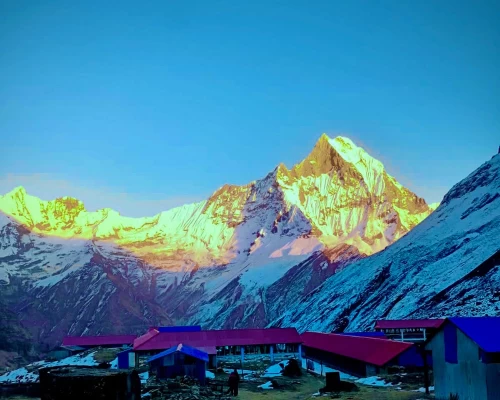
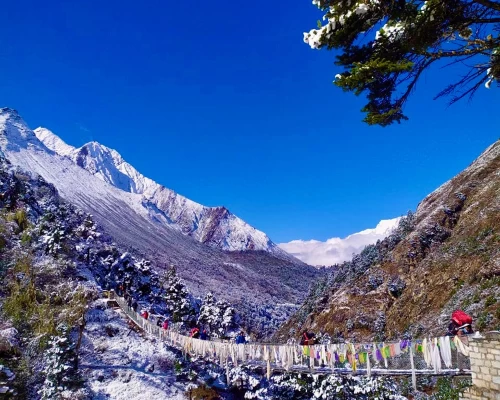
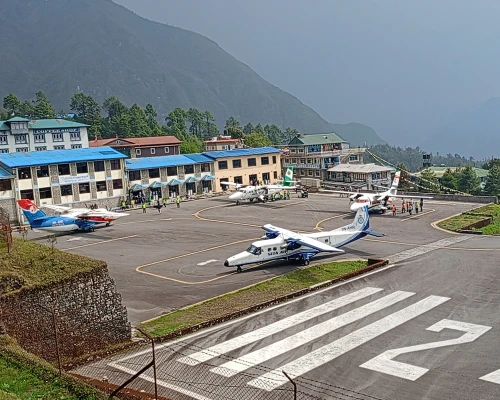
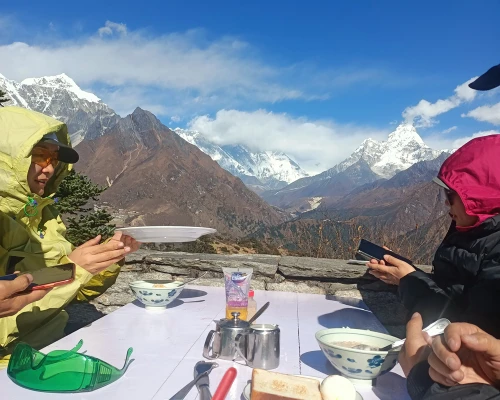



 based on 19 reviews
based on 19 reviews
